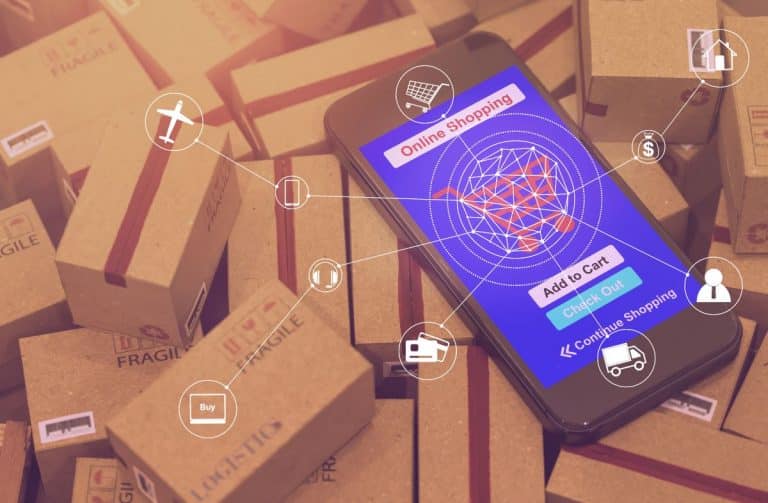In the ever-evolving landscape of e-commerce, businesses are constantly on the lookout for innovative technologies that can set them apart from the competition. One such groundbreaking technology that has been reshaping the online shopping experience is Augmented Reality (AR) for product visualization. AR enables consumers to interact with virtual products in their real-world surroundings, creating a more immersive and personalized shopping journey. In this comprehensive blog post, we’ll dive deep into the realm of AR for product visualization, with a specific focus on the pivotal role of real-time tracking in evaluating the effectiveness of AR functionalities in the eCommerce sphere.
Understanding Augmented Reality in eCommerce
Augmented Reality, often abbreviated as AR, refers to the integration of digital information with the user’s real-world environment in real-time. In the context of eCommerce, AR has emerged as a game-changer, allowing consumers to visualize and interact with virtual products before making a purchase.
Over the years, AR has undergone significant evolution, transforming from a novelty to a practical tool for enhancing the online shopping experience. Initially used for entertainment and gaming, AR has found its way into the eCommerce landscape, offering a novel approach to product visualization.
Key Benefits of AR in eCommerce
Enhanced Product Visualization:
- AR provides customers with a 3D, interactive representation of products in their real-world environment. This goes beyond traditional images, allowing shoppers to explore intricate details and visualize how products fit into their lives.
Increased Customer Engagement and Satisfaction:
- The interactive nature of AR captivates users, leading to higher engagement levels. This increased engagement translates into higher customer satisfaction as users feel more confident and informed about their purchase decisions.
Reduction of Product Returns:
- By offering a more realistic preview of products, AR helps in reducing the likelihood of returns. Customers can virtually try out products, ensuring a better match between their expectations and the actual product received.
Real-Time Tracking: The Engine Behind AR Effectiveness Analysis
At the core of AR’s effectiveness lies real-time tracking, a technology that monitors and analyzes user movements and interactions with virtual objects. Real-time tracking ensures that the virtual overlay aligns seamlessly with the user’s physical environment, creating a dynamic and responsive AR experience.
The importance of real-time tracking cannot be overstated. It allows for the collection of valuable data on user behavior, preferences, and engagement patterns during AR sessions. This data becomes instrumental in gauging the effectiveness of AR functionalities and optimizing them for better user experiences.
Analyzing User Interactions
Tracking User Movements:
- Real-time tracking records how users move and interact with virtual products. This information provides insights into which aspects of the product users focus on and how they navigate the virtual space.
Collecting Data on User Preferences:
- By analyzing user interactions, businesses can gather data on customer preferences. This data can be leveraged to tailor future AR experiences, offering personalized recommendations and improving overall user satisfaction.
Utilizing Real-Time Tracking for Analysis:
- Real-time tracking plays a pivotal role in measuring conversion rates within AR-enhanced product pages. Businesses can track how many users interact with AR features and, more importantly, how many of those interactions lead to a successful purchase.
Comparing Conversion Rates:
- A comparative analysis between traditional product pages and AR-enabled pages unveils the impact of AR on conversion rates. Businesses can identify the specific products or categories where AR proves most effective in driving conversions.
Challenges and Solutions in Implementing AR for Product Visualization
Device Compatibility and Limitations:
- AR experiences depend on the capabilities of the user’s device. Ensuring compatibility across a range of devices and addressing technical limitations is a constant challenge in the development and implementation of AR in eCommerce.
Network Requirements:
- Seamless AR experiences require a stable and high-speed network connection. Addressing the network requirements ensures that users can enjoy smooth and uninterrupted AR interactions.
Balancing Realism and Simplicity:
- Striking the right balance between a realistic AR experience and simplicity is crucial. Overly complex interactions may overwhelm users, while overly simplistic experiences may fail to impress.
Addressing User Discomfort:
- Some users may experience discomfort or motion sickness during AR interactions. Implementing measures to address these issues, such as providing customizable settings, is essential for ensuring a positive user experience.
Privacy and Security Concerns
Protecting User Data:
- As with any technology, AR raises concerns about privacy and data security. Implementing robust measures to protect user data, including real-time tracking information, is imperative for building trust with consumers.
Secure Real-Time Tracking Mechanisms:
- Real-time tracking involves the collection and processing of user data. Ensuring the security of these mechanisms is crucial to prevent unauthorized access and protect user privacy.
Conclusion
In conclusion, the integration of Augmented Reality for product visualization marks a significant milestone in the eCommerce industry. Real-time tracking emerges as the linchpin in evaluating the effectiveness of AR functionalities, providing businesses with invaluable insights into user behavior and preferences. As technology continues to evolve, eCommerce entities must remain agile, embracing innovations like AR to stay ahead in the competitive landscape.
The future of online shopping undoubtedly lies in the immersive and dynamic experiences that AR brings to the table. By leveraging real-time tracking and addressing challenges through technological advancements, businesses can unlock the full potential of AR, offering consumers a truly personalized and engaging shopping experience. As we embark on this eCommerce revolution, one thing is clear – Augmented Reality is not just a feature; it’s a transformative force reshaping the way we shop online.




